
The Bottom Line
Introduction, Specifications, and Pricing
DeskMini has been an extremely popular barebone solution for ASRock. Going back several generations, these small form factor platforms offer consumers a simple, customizable platform to build from and feature both Intel and AMD chipsets depending on the model.
Their latest release is the DeskMini X300, an AMD AM4 platform built for Ryzen Renoir, Picasso, and Raven Ridge APUs. For this review, we have deployed the Ryzen 7 Pro 4750G.
Specifications and Marketing
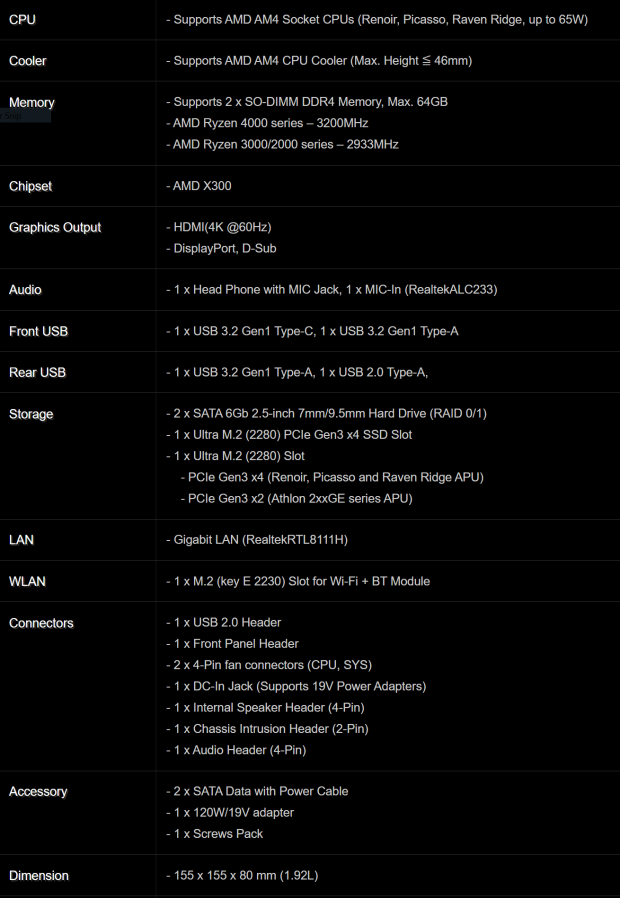
Specifications for the DeskMini include support for Socket AM4 APUs from the Raven Ridge, Picasso, and Renoir families, all with DDR4 memory support up to 3200MHz for the 4000 series and 2933MHz for older 2 and 3000 series. The chipset for this platform is the AMD X300, similar to the A300 in many ways, including the same amount of available PCIe lanes at 24 Gen3 along with 2x SATA 6Gb/s ports, 2x Ultra M.2, and 4x USB 3.0 ports.
Display technology on this platform includes 1x HDMI, 1x DP, and VGA, while additional connectivity comes from the gigabit LAN powered by the Realtek RTL8111H.
Pricing
The ASRock DeskMini X300 carries an MSRP of $159.99 with a one-year warranty.

| Today | 7 days ago | 30 days ago | ||
|---|---|---|---|---|
| Loading... | Loading... | |||
|
* Prices last scanned on 12/31/1969 at 6:00 pm CST - prices may not be accurate, click links above for the latest price. We may earn an affiliate commission from any sales.
|
||||
Packaging, Accessories, and Overview
Packaging and Accessories
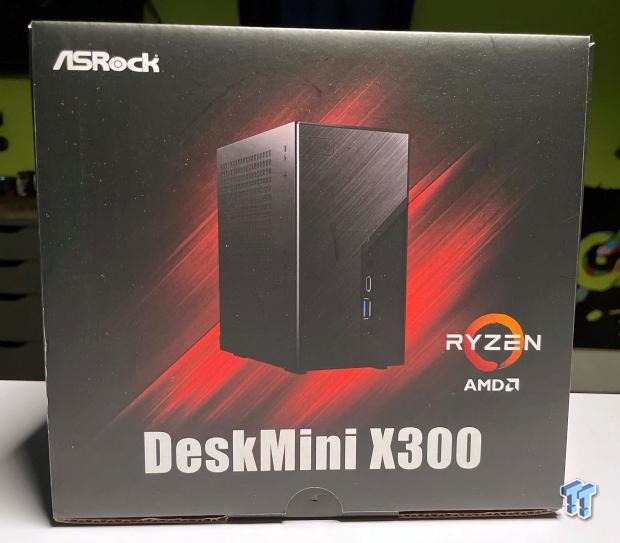
ASRock feeds off the Ryzen branding for the DeskMini X300 with logos placed to the right. Centered, we have an image of the enclosure itself.
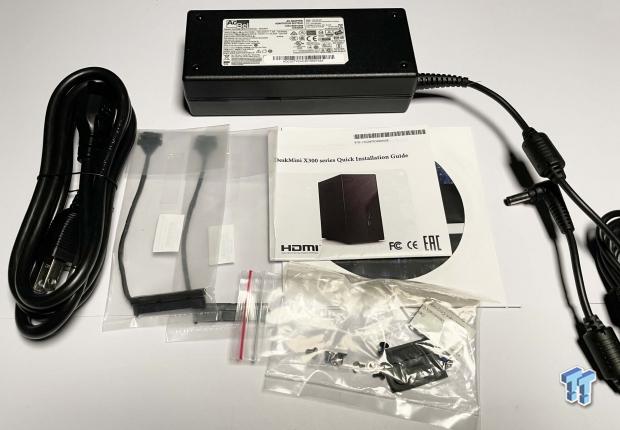
Scope of delivery includes an AcBel 19v 120W adapter, driver disc, and manual. You will also find two SATA cables and screws for the m.2 slots.
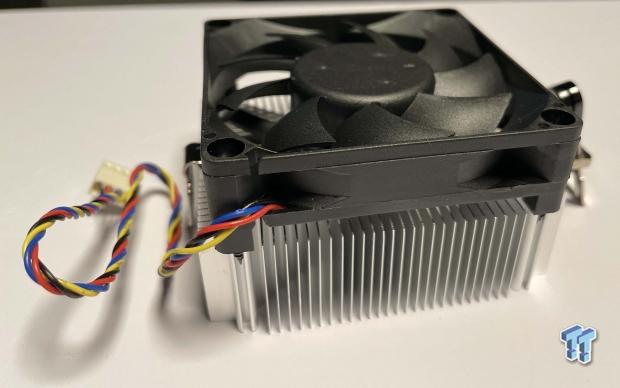
The DeskMini kit does include a basic CPU cooler designed to handle 65w TDP.
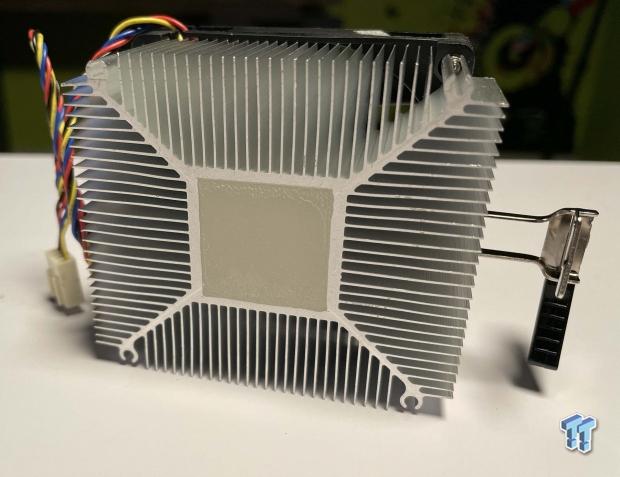
The cooler does have TIM already applied.
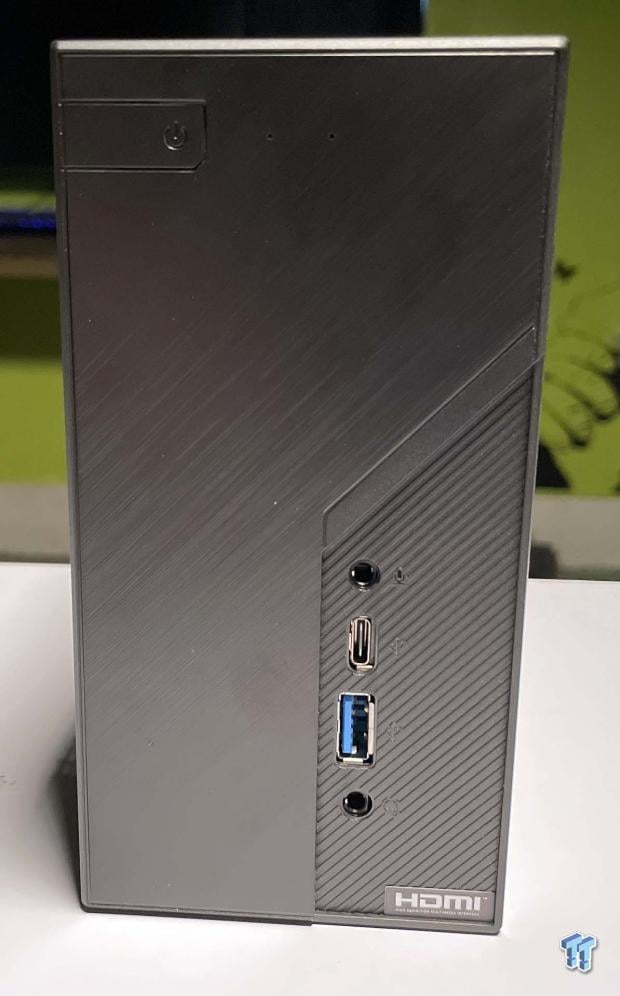
The front of the DeskMini offers no branding at all from ASRock. We have two USB ports split between Type-C and Type-A, along with a headphone and mic jack.
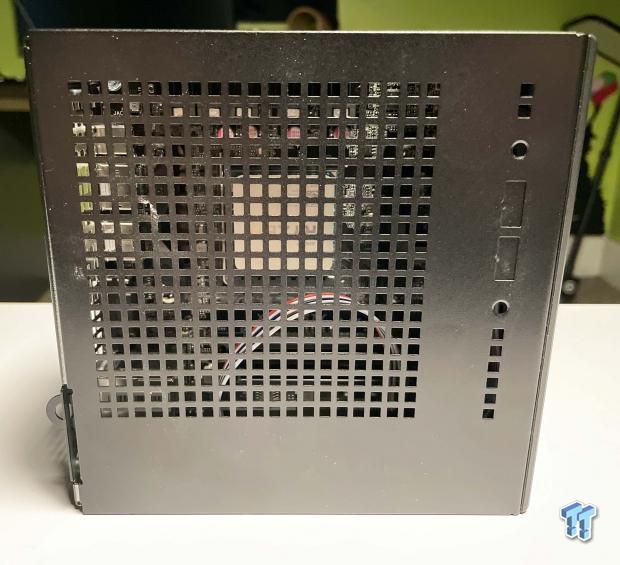
The side panel is mostly open to allow sufficient cooling through. You will find knock-outs in the steel chassis to add additional USB ports with a kit from ASRock.
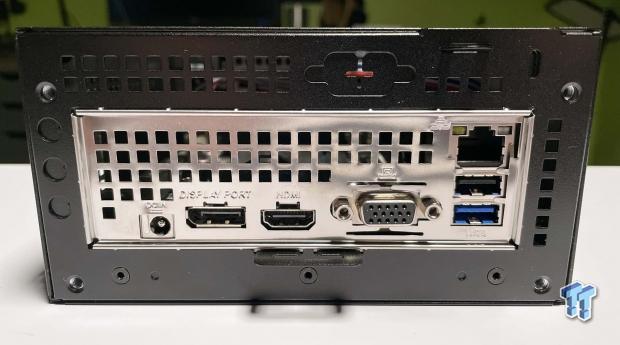
The rear I/O includes HDMI, DP, and VGA connections along with Gigabit LAN and USB 3.0 ports. To the far left, the chassis has knock-outs to install your Wi-Fi antenna kit.
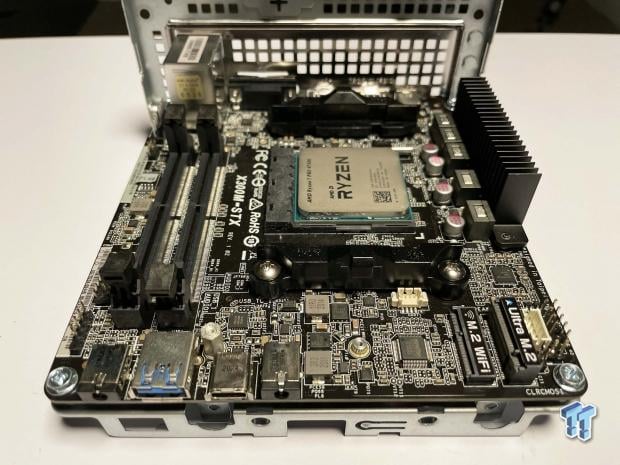
Opening the chassis, the motherboard supports two SO-DIMM modules to the left with m.2 Wi-Fi and storage upfront. The CPU sits just above and uses the AM4 socket.
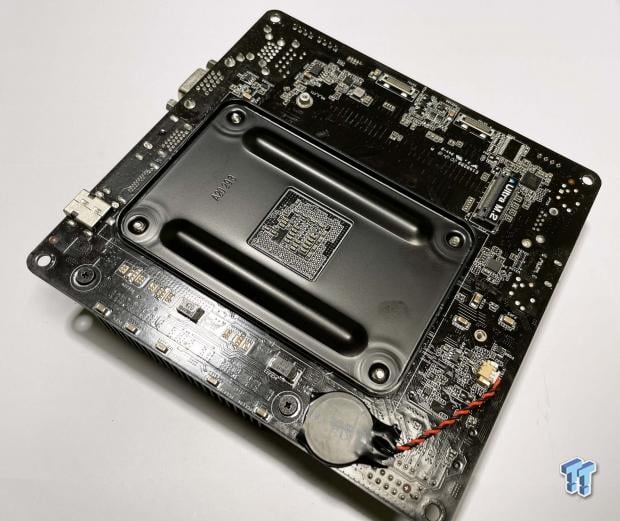
The back of the motherboard offers a second m.2 slot along with two SATA connections.
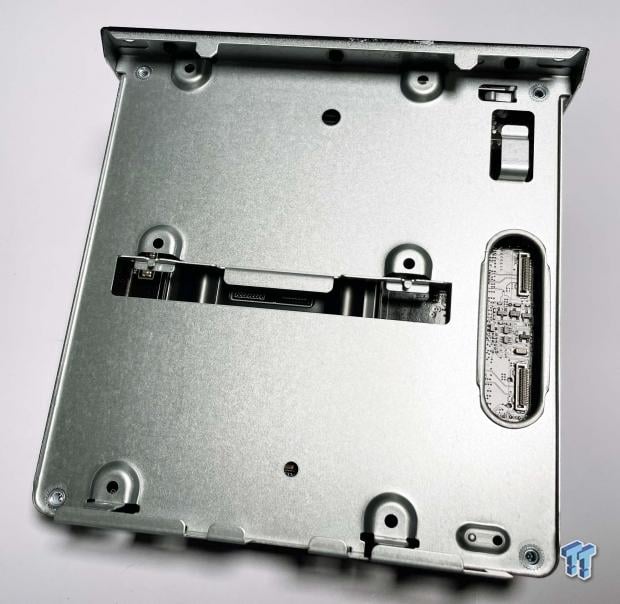
The chassis supports the addition of two 2.5" drives with proper mounting.
UEFI and System
UEFI
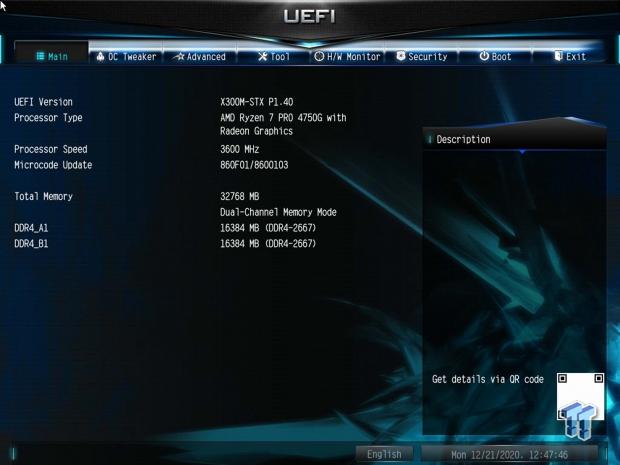
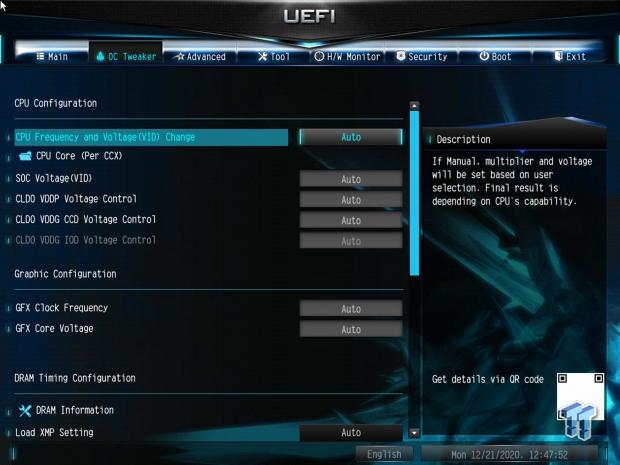

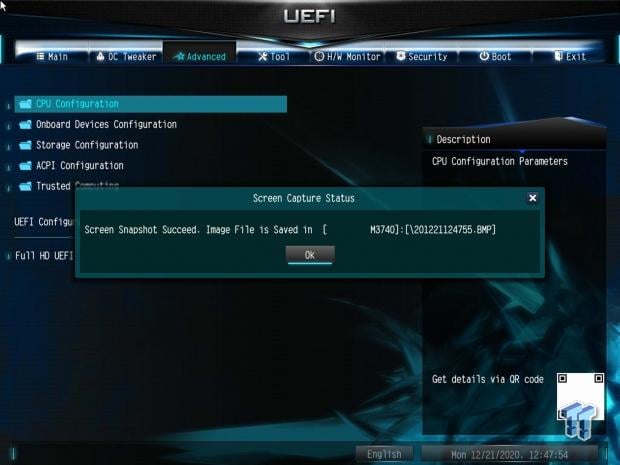
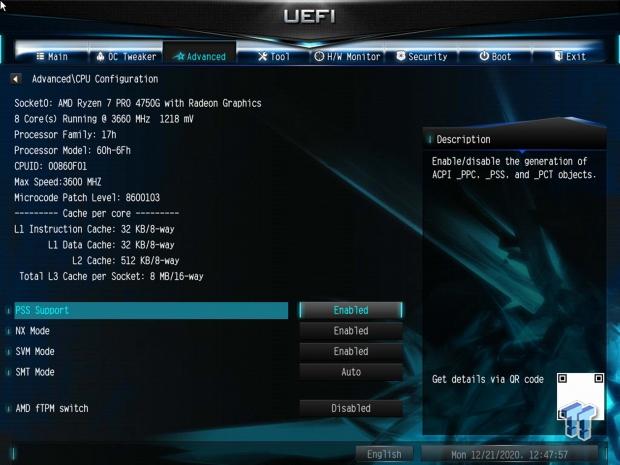
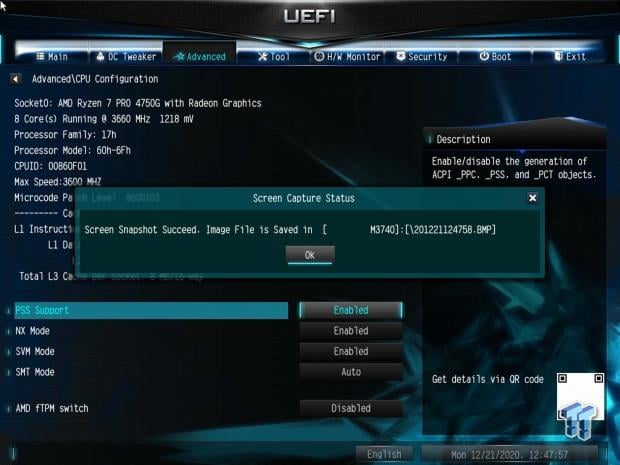
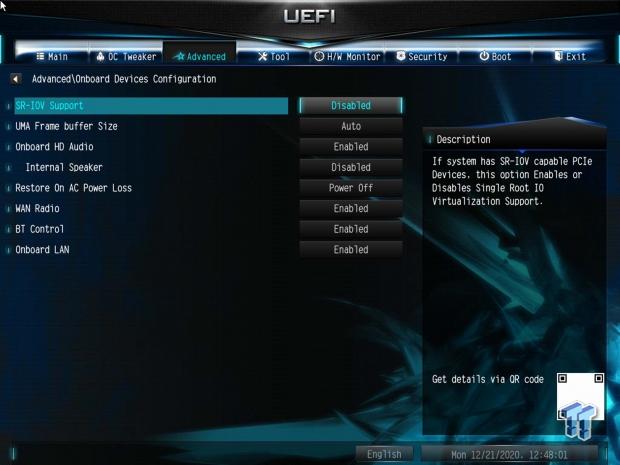

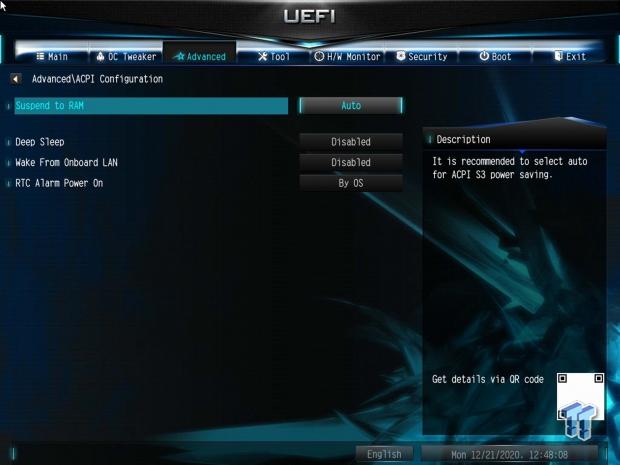
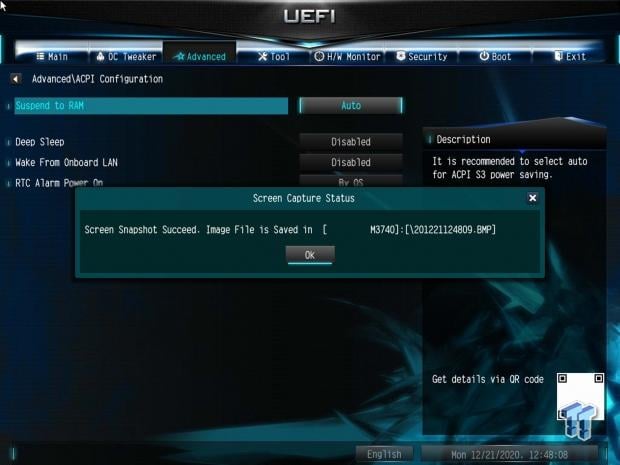

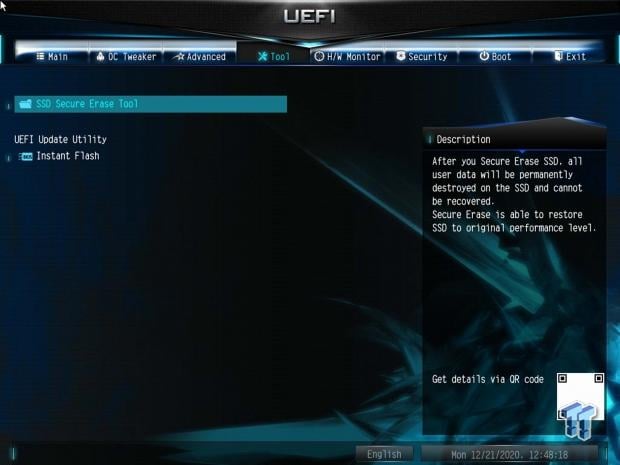
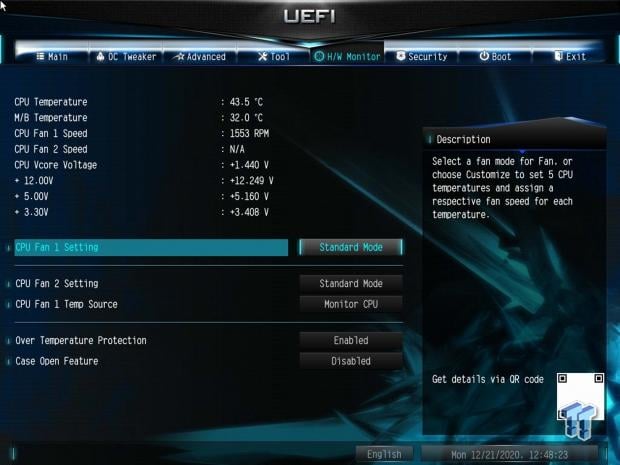
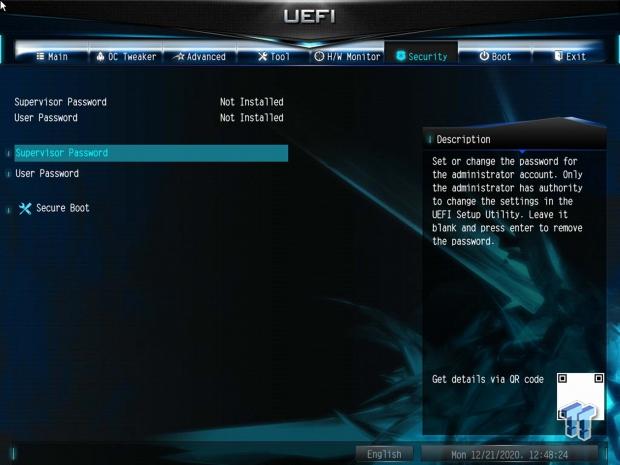
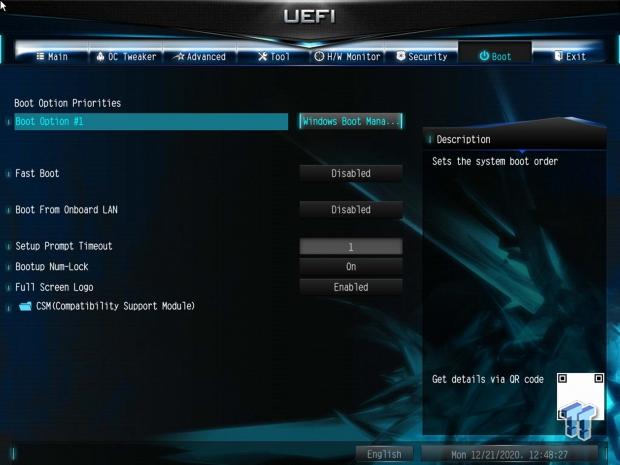
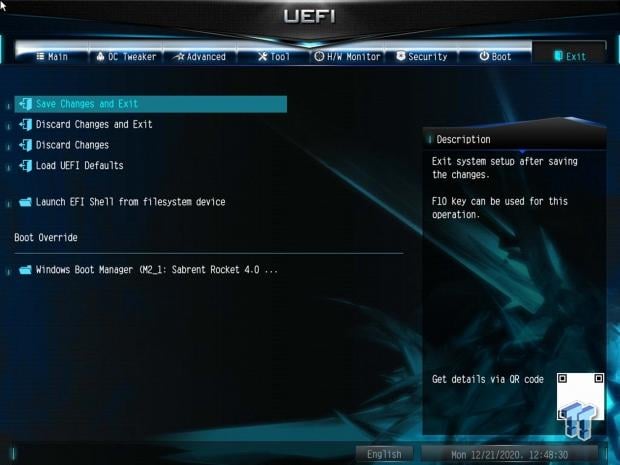
The setup offers a traditional ASRock menu system for the EFI. The main menu provides a quick overview of the installed CPU and memory, while OC Tweaker brings overclocking options for CPU, memory, Infinity Fabric, and IGFX.
The advanced menu holds most of your basic menu options, including onboard device configuration. The tools menu includes support for RGB LED setup without the need for software. You can also use Easy RAID, SSD Secure Erase, and NVMe Sanitize to manage your storage. Instant flash is available to update your BIOS.
System
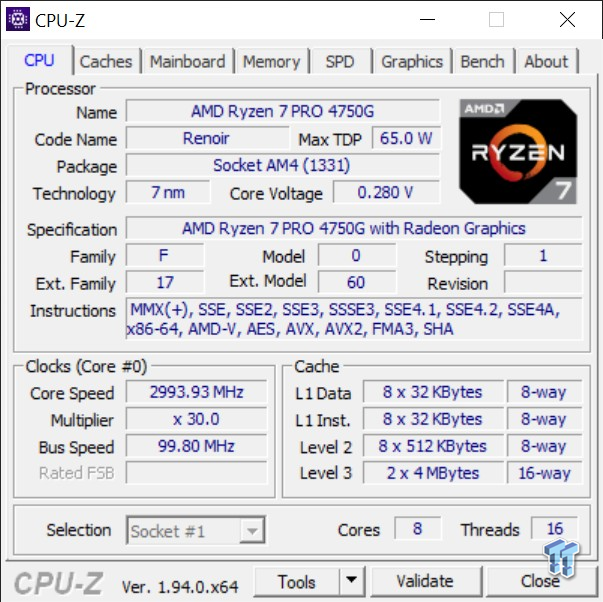
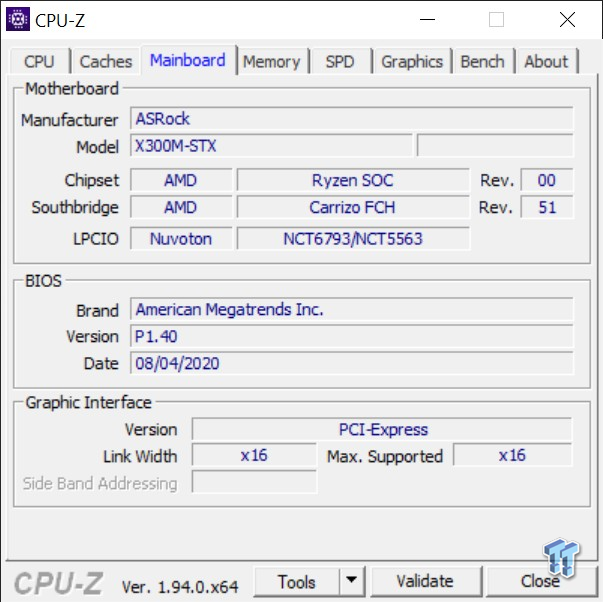
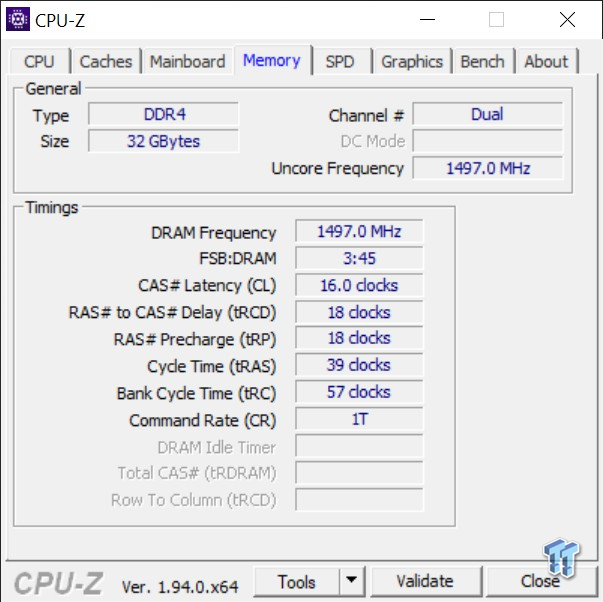

As mentioned, our sample of the DeskMini X300 was deployed with the Ryzen 7 Pro 4750G. This is an 8-core 16 thread solution built on the Zen 2 architecture with a 3.6GHz base clock and 4.4GHz boost. Integrated graphics is from the AMD Vega 8 family with 512 shaders; performance around 2.1 TFLOPS.
WPrime, Cinebench and AIDA64
WPrime
WPrime is a leading multi-threaded benchmark. In our setup, we will manually set the number of cores for the CPU under test. The ROG Crosshair VIII Hero is our baseline motherboard for all charts.
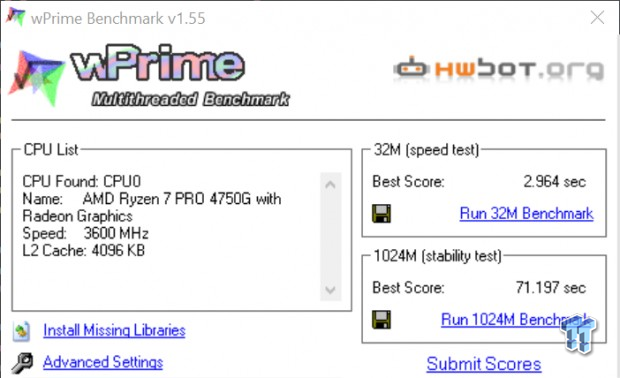
32M testing for the DeskMini shows 2.96 seconds with 71.19 seconds for 1024M.
CPUz Bench
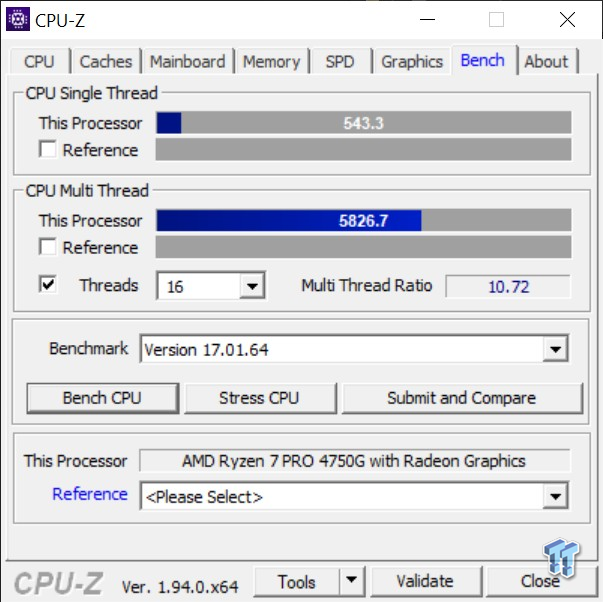
CPUz bench has been added to our reviews as a simple bench to tune your system. For the DeskMini, we see 543 single thread and 5826 multi-thread.
Cinebench
Cinebench is a long-standing render benchmark that has been heavily relied upon by both Intel and AMD to showcase their newest platforms during unveils. The benchmark has two tests, a single-core workload that will utilize one thread or 1T. There is also a multi-threaded test which uses all threads or nT of a tested CPU
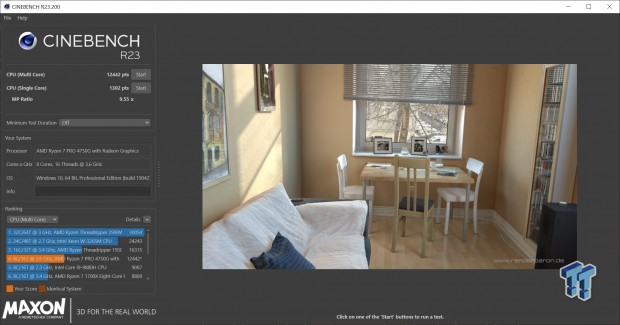
R23 shows 1302 pts for our DeskMini in single thread while nT reaches 12442.
RealBench
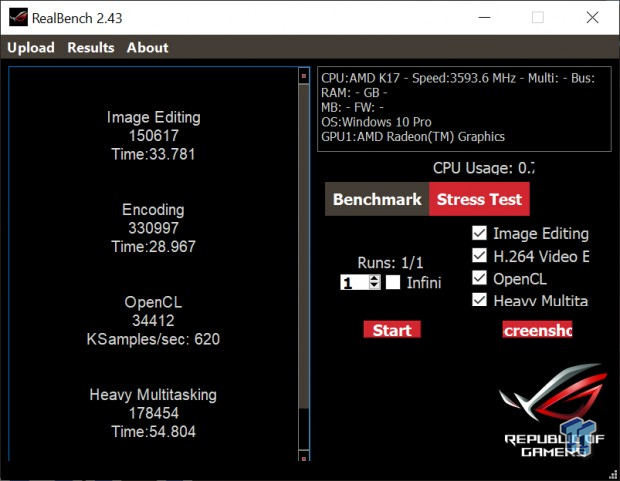
Realbench uses both video and photo workloads to benchmark your CPU. We touched 54 seconds in heavy multitasking, 28 for encoding, and 33.7 seconds for image editing in testing.
AIDA64 Memory
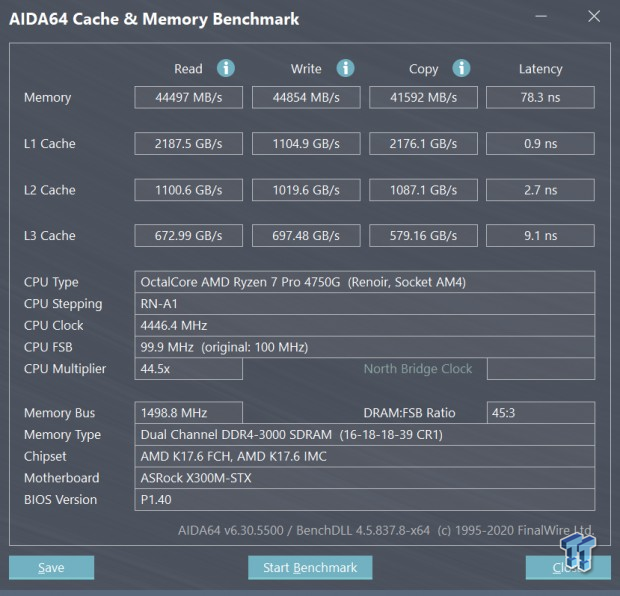
AIDA64 has stayed as our means of testing memory bandwidth. The X300 grabs 44497 MB/s read, 44854 MB/s write, and 41592 MB/s copy.
Unigine and UL Benchmarks
PCMark 10
PCMark is a benchmark from UL and tests various workload types to represent typical workloads for a PC. Everything from video conferencing, image import, and editing, along with 3D rendering, are tested.
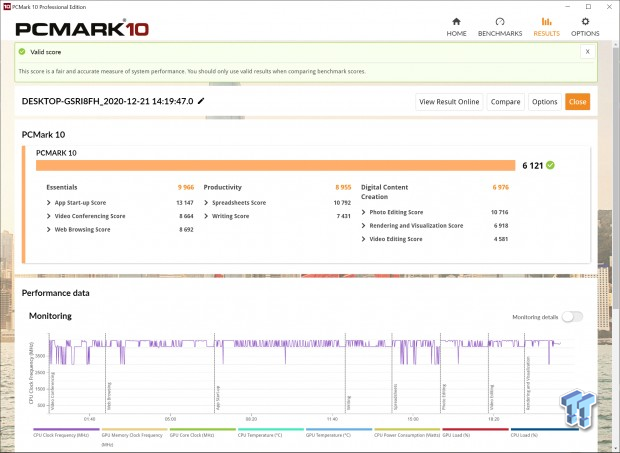
Focusing on workload scores, we find 9966 for Essentials, 8955 for Productivity, and 6976 for Digital Content.
Unigine Superposition
Superposition from Unigine is a DX12 based benchmark. We test with the 720p LOW preset as this removes all but the most basic GPU loading, with all of the FPS coming from the CPU.
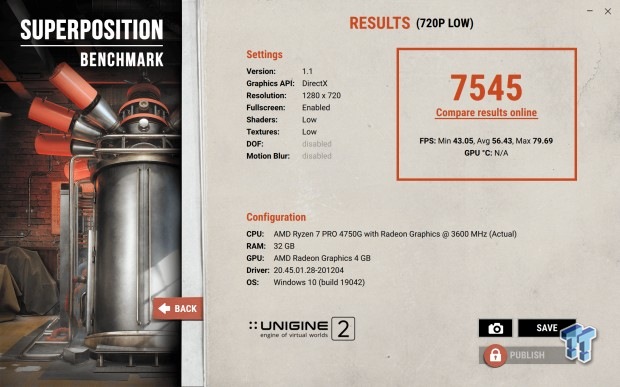
The DeskMini and 4750G bring in 56.4FPS.
3DMark
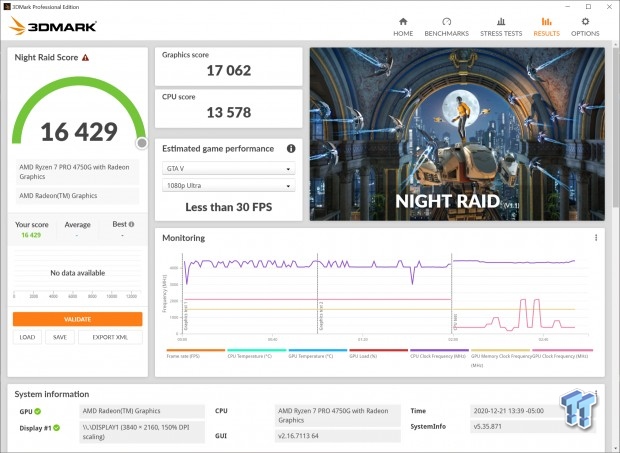
Night RAID is our DX12 performance test. The DeskMini scored 16429 overall, graphics at 17062, and CPU at 13578.
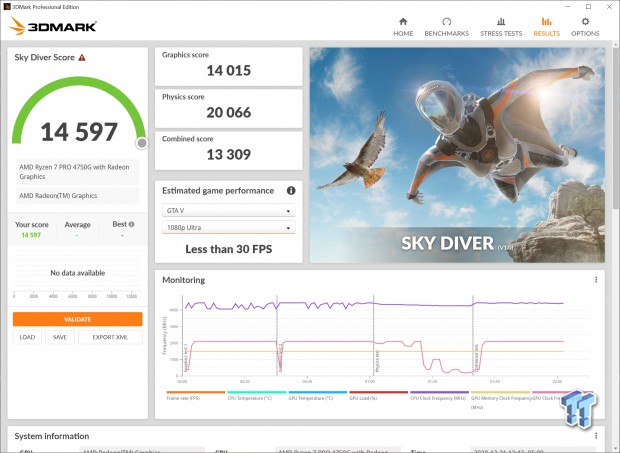
Sky Diver is a DX11 performance test giving the X300 an overall score of 14597.
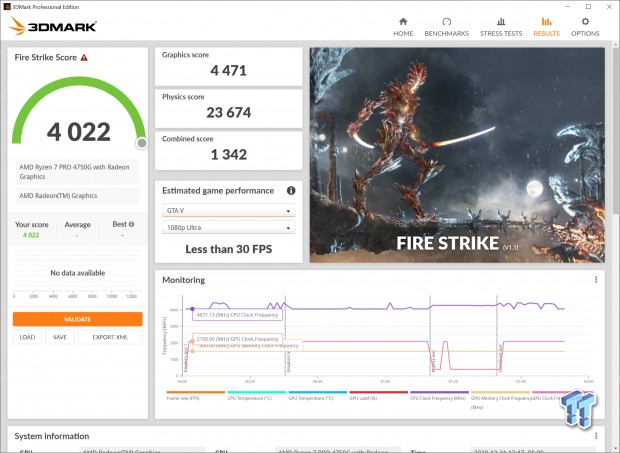
To compare the DeskMini to larger Gaming PCs, we ran through FireStrike. The score ended at 4022 overall, 4471 for graphics.
Gears Tactics
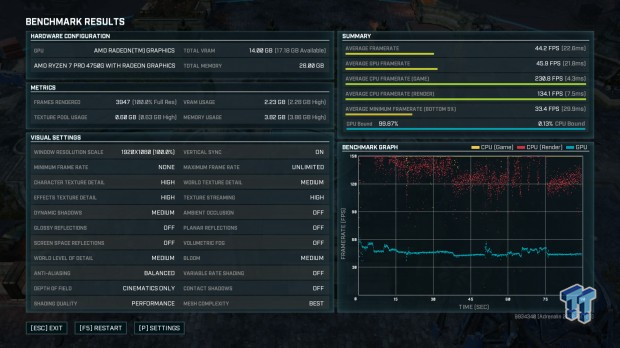
Real gaming testing with Gears Tactics showed a rather decent 44.2 FPS on average 1080p High for the 4750G and DeskMini X300.
System I/O Benchmarks and Power Consumption
System I/O Benchmarks
Storage with CrystalDiskMark
Storage tests are all handled by our Sabrent Rocket NVMe 4.0 SSD for internal testing and our WD_BLACK P50 for external testing.
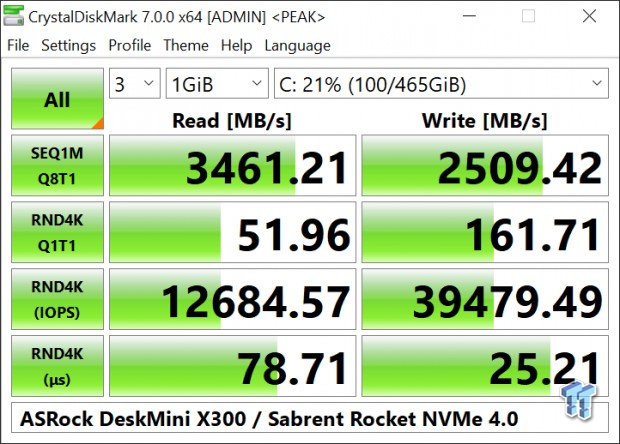
Internal storage performance reached 3461 MB/s read and 2509 MB/s write.
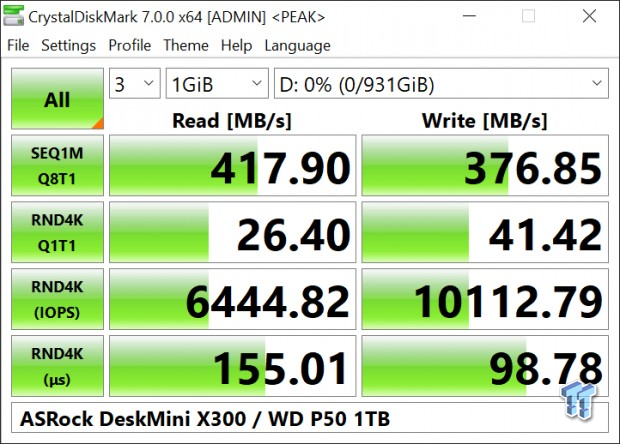
External storage performance topped out at 417 MB/s read and 376 MB/s write with our WD BLACK P50.
Networking
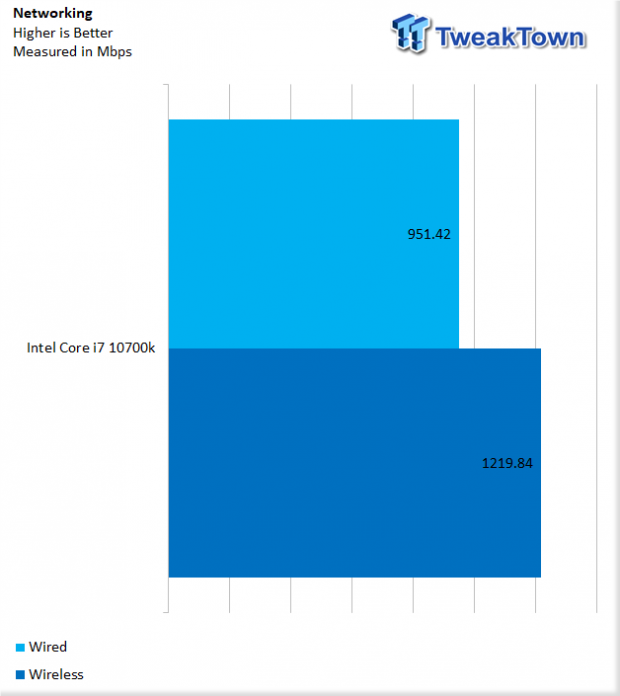
Wired and Wireless throughput were both great on the X300. Integrated Gigabit LAN topped out at 951Mbps while our add-on Killer AX1650 reached 1219Mbps in testing.
Power Consumption
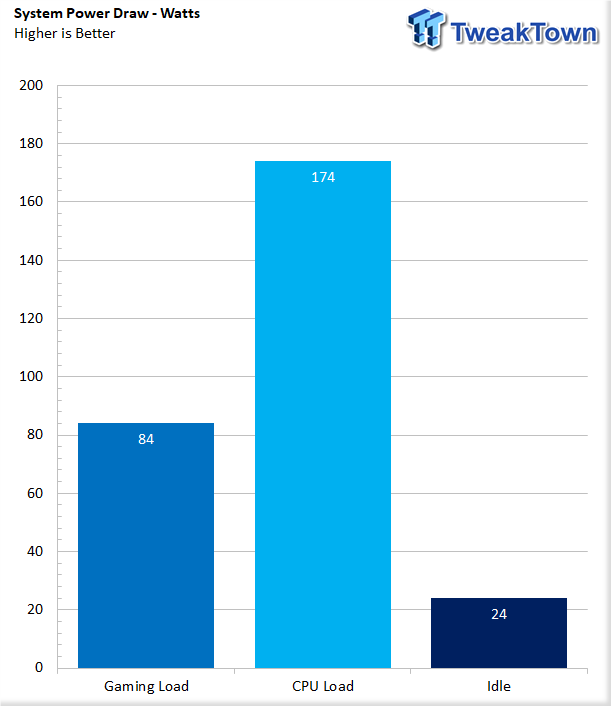
Power consumption was 24 watts idle, 174 watts running Cinebench R23, and 84 watts in gaming tests.
Overclocking, Thermals and Final Thoughts
Overclocking
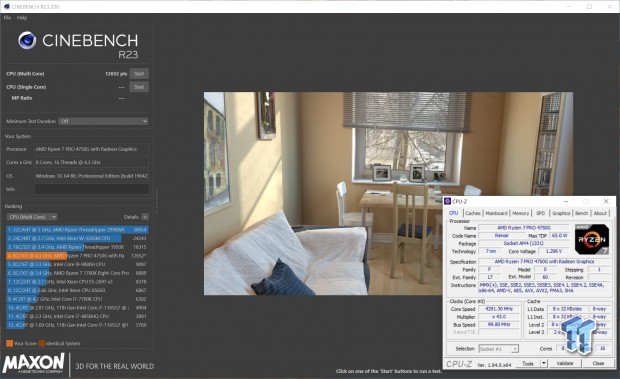
We did play with overclocking on the X300, getting our Ryzen 4750G to 4.3GHz all core at 1.29v. This netted only 200 points in R23.
Thermals
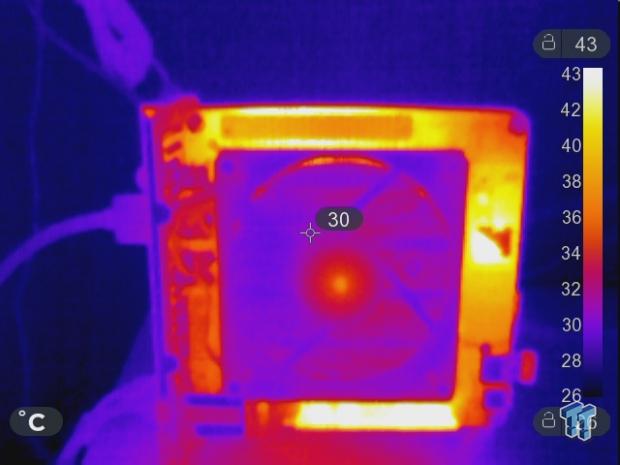
Thermals were decent for how small the heat sink array is on the X300. VRMs were running around 43c, peaking near 60-65c under full load.
Final Thoughts
I must admit I've had little experience with these small form factor systems, but I'm nearly hooked after having the ASRock DeskMini as my daily for the last few weeks. Coming from years of full enthusiast builds, the DeskMini doesn't lack any "horsepower" with the 4750G at the center of the build. It does also help that I was able to grab up 32GB of DDR4 3000MHz RAM from Corsair and the Rocket NVMe 4.0 SSD from Sabrent, building this barebone into an enviable platform with ease.
The design of the chassis makes building your own DeskMini super simple. The entire tray slides out, allowing for open-air building, and after you just slide it all back together. Additionally, the chassis design lets a ton of air through for the best temps possible.
What We Like
Form Factor: DeskMini takes full advantage of the STX form factor.
AM4: Sticking with AM4 for this platform allows so much flexibility for the consumer.
Price: DeskMini X300 carries an amazing MSRP at $159.99.
What Could Be Better
USB Ports: Our only gripe for the DeskMini X300 is the lack of USB 3.0 ports and the performance.

